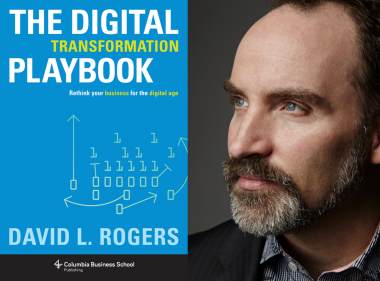Digital Transformation Leadership: The 5 Essential Qualities

As the role of the CIO continues to evolve and become increasingly complex, it is important to be able to effectively navigate uncertainty and adapt to change. Digital technology has not only disrupted traditional business models, but it has also fundamentally transformed the way that leadership is approached and executed. According to research from Gartner, successful digital initiatives require significant shifts in technology leadership and a willingness to embrace new ways of thinking and problem-solving.
The 5 Essential Qualities:
The speed at which an organisation undergoes digital transformation can be influenced by the effectiveness of its leaders in adapting to the changing landscape. Executive technology leaders must be able to anticipate and prepare for opportunities and challenges presented by digital technology, and use it to their advantage. They must also be able to leverage disruption to find value and drive success.
“CIOs know they must function with flexibility and agility to thrive in the dynamic world. The realities of a disrupted workplace, business model transformations, operating model changes and IT delivery model changes, all force fundamental shifts in the activities and responsibilities of the given role of a CIO,” (Gartner). According to Gartner, becoming an effective digital CIO requires these 5 characteristics:
Neophilia : A love of novelty and a desire to explore and experience new things.
Neophiliacs are characterised by their natural curiosity and attraction to new things. They are constantly seeking ways to explore and create value through novel ideas and approaches. In the context of digital transformation, neophiliacs are valuable because they are open to new perspectives and ideas that challenge the status quo. Instead of focusing on what already exists, they ask "What do we want to achieve?" and use that as the driving force for finding solutions to complex problems.
Innovation is crucial for successful digital transformation. It allows organisations to develop new technologies, processes, and business models that can improve efficiency, drive growth, and increase competitiveness. It also enables organisations to stay relevant in an increasingly dynamic and fast-paced digital landscape. Innovation is what allows organisations to fully leverage the opportunities of digital transformation and drive long-term success.
Innovating and Improvising: Creativity and Adaptation
Successful digital leaders do not necessarily focus on inventing and innovating all the time. Instead, they recognize where their organisation needs to be different and where it can benefit from imitating and adapting established methods.
By focusing their efforts on areas where they can deliver the greatest value and advantage, digital leaders are able to drive real transformation and impact. In contrast, ineffective leaders tend to lack focus and spread themselves too thin, hindering their ability to drive meaningful change.
Innovation Beyond Borders: Exploring New Opportunities Outside Your Industry
According to Gartner, digital leaders who exhibit this characteristic are known as "digital dragons." These leaders are constantly seeking new opportunities and are not limited by the boundaries of their industry. They are capable of creating entire new industries while redefining value in the industries they pursue. In order to maintain this market disruption mindset, digital leaders develop strategies and adoption plans that are flexible and adaptable.
Effective digital leaders have a clear vision of the future and are not afraid to make decisions that may challenge the status quo. Unlike their counterparts who see the industry as static and unchanging, these leaders recognize that the digital landscape is constantly evolving and require a dynamic approach to stay ahead.
Finding Opportunities for Value Creation: Is digital always the answer?
Successful digital leaders understand that simply making something digital does not necessarily increase its value. In fact, it may even decrease its value if the digital offering does not align with the organisation's overall goals and objectives.
Effective digital leaders carefully consider the logic behind their product or service's value proposition before implementing digital tools. They ask themselves how the digital offering will help drive business outcomes such as customer centricity, market share growth, and revenue enhancement. They use digital technology to enhance their value proposition by offering on-demand services, hyper personalization, dynamic pricing, and real-time applications. By taking this strategic approach to digital adoption, successful digital leaders are able to drive real value and impact for their organisation.
Finding Opportunities Through Technology: Strive to be a Tech Wiz
A successful digital leader has a deep understanding of the technology that underpins their organisation. Without this understanding, it can be difficult to unlock the full potential of technology and drive real value and impact.
In order to enable a technology-enriched environment, CIOs should create learning opportunities that are engaging, collaborative, and customised. They should also embrace technology as both a passion and a necessity, using it to stay innovative and relevant in the crowded and competitive business landscape. By having an interest and passion for technology, digital leaders can gain a deep understanding of its capabilities and limitations, and use this knowledge to drive their organisation's success.
Conclusion:
-
With disruptions to the workplace and ongoing changes to business, operating and IT delivery models, CIOs must be prepared to adapt and adjust their approach to technology leadership.
-
CIOs who are able to effectively navigate uncertainty and change are more effective business leaders.
-
Instead of merely reacting to or responding to business requirements, digital transformation requires IT leaders to reinvent their strategy.


